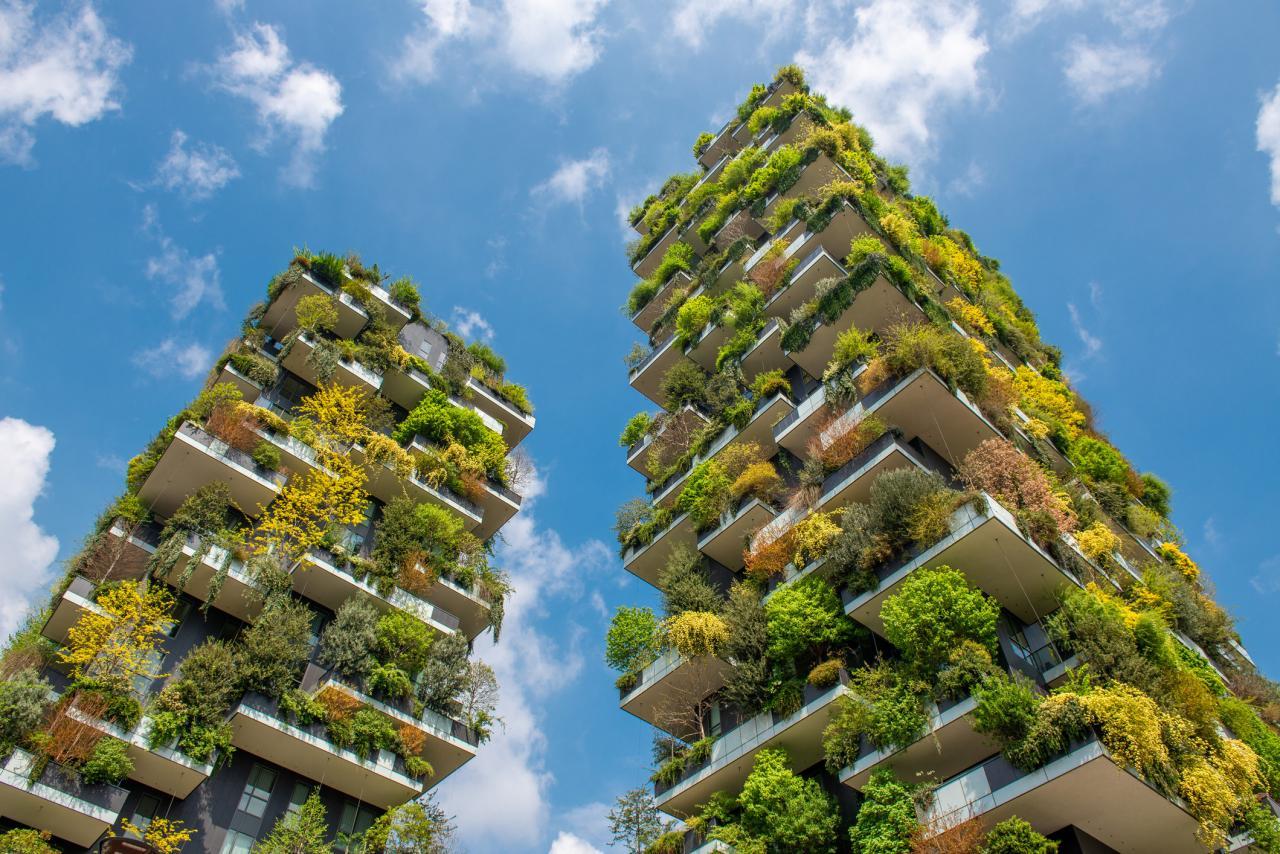
31 Oct Vertical Forest Buildings – Extreme Living Walls!
Living walls have so many benefits
As we’ve discussed before, living walls don’t just look amazing, they also bring countless other benefits. We all know they have a huge positive impact environmentally. Plants filter the air, dampen urban noise, and provide habitat for wildlife. They also remove carbon dioxide from the air and add oxygen. On a small scale, these benefits make good reasons to include green walls in gardens, terraces or interior design schemes. However, you may not have seen that living walls can also be used on a huge scale. We’re not just talking about the large green walls on the facades of shopping centres. The vertical forest buildings in Milan are an astounding feat of architectural and environmental design that we wanted to share with you.
Not just a vertical garden, but a vertical forest!
Bosco Verticale (vertical forest) is an award-winning pair of residential towers in Milan. The taller of the two is 110 metres high, with 26 storeys. The smaller one is 76 metres high and has 18 floors. The really exciting aspect of the vertical forest buildings is that their facades are packed with plants. Together the towers have 800 trees, 5000 shrubs, and 15,000 perennial plants. This quantity of vegetation is the same as what would be present in 30,000 square metres of woodland and undergrowth. Instead it is present on 3,000 square metres of urban surface. It’s amazing!
In the urban setting of Milan, the plants have an important role to play in mitigating pollution and producing oxygen. Trees and plants absorb carbon dioxide, in probably the most efficient and cost-effective way. The number of trees and perennial plants in the buildings can convert approximately 44,000 pounds of carbon each year. With 90 distinct plant and tree species, the biodiverse vertical forests attract wildlife too. And there’s more. According to the website of the architects that designed the buildings, the plant facade “is also used to moderate temperatures in the building in the winter and summer, by shading the interiors from the sun and blocking harsh winds. The vegetation also protects the interior spaces from noise pollution and dust from street-level traffic”.
You might think the buildings would take an awful lot of energy to maintain. However, they use renewable energy from solar panels and filtered waste water to sustain the buildings’ plant life. These green technology systems reduce the overall waste and carbon footprint of the towers, making them self-sufficient in terms of keeping the plants healthy.
Awards galore!
It’s no wonder this project has won multiple awards, including the International Highrise Award from the Deutschen Architekturmuseums in Frankfurt (2014) and the CTBUH Award for the best tall building in the world from the Council for Tall Buildings and Urban Habitat at Chicago’s IIT (2015). You can read more about the towers by following the link to Boeri architects.

